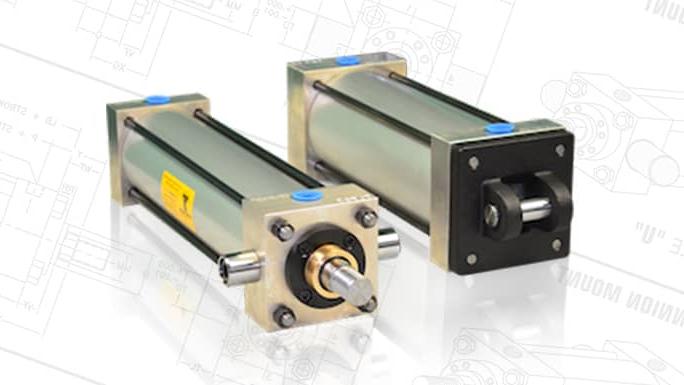
What Is a Tandem Cylinder?
Tandem cylinders are very similar to hydraulic cylinders, which are powerful, yet simple machines that are found in numerous industrial and commercial applications. Despite having the ability to exert enormous forces, hydraulic cylinders are very simple in design. A tandem cylinder is actually composed of two hydraulic cylinders placed end to end, which makes them ideal for many applications that single hydraulic cylinders are not suited for.
What Are Tandem Hydraulic Cylinders Used for?
Tandem hydraulic cylinders can be found in heavy-duty industrial applications in industries like construction, manufacturing, and agriculture. Tandem cylinders are often used in applications where a single hydraulic cylinder would not be powerful enough to get the job done, but there is not enough available space for a large hydraulic cylinder. They can also provide the same amount of power in a smaller package because there are two cylinders working together to exert high forces.
These cylinders are often found on industrial vehicles. Forklift trucks, for example, often use them to raise their forks. Extremely large construction cranes often use multiple tandem hydraulic cylinders.
Some of the largest and most powerful agricultural vehicles, including combine harvesters and crop sprayers, use tandem cylinders to create the high levels of sustained force that are required. Mining and excavating equipment, which is some of the largest and most powerful industrial equipment in the world, often employ these cylinder systems.
How Do Tandem Hydraulic Cylinders Work?
Hydraulic cylinders have simple designs, which is what makes them so reliable. In fact, a simplified tandem hydraulic cylinder has only four basic components: the barrel (casing), the piston rod inside the barrel, the butt at one end of the barrel, and the open gland at the other end. The hydraulic force pushes the piston through the barrel and out of the gland. Tandem cylinders are built this way, but two cylinders are connected and the butt of the first is opened up so that only one piston rod needs to be used.
The power of these cylinders comes from hydraulic pressure, which is created when fluid is injected into the cylinder. The buildup of fluid quickly moves the piston forward with great force. When this cylinder is used, the hydraulic pressure does not need to be increased; the force from the fluid buildup is doubled due to the path of travel being twice as long.
Tandem cylinders are not only useful because they are more compact than extremely large single cylinders, but they also do not require the high hydraulic pressures required by large single cylinder mechanisms.
If you are upgrading from a smaller single cylinder to a large hydraulic cylinder, you may need to install new hydraulic lines that can provide higher pressures. You do not need to do this for tandem cylinders, which can save thousands of dollars.
Tandem Cylinder Components
As previously mentioned, a simplified hydraulic cylinder has only four basic components. However, modern tandem cylinders are more complex. The major components of this type of cylinder include:
- Piston rod: The rod enters the cylinder through the head at one end and is connected to the piston at the other. Rods are usually chromed to protect the steel underneath and to reduce friction.
- Port: The port is the aperture through which hydraulic fluid enters the cylinder.
- Barrel: The barrel, commonly made from steel, is the cylinder’s “shell.”
- Butt: Also known as a “base.” This component closes off the cylinder and is often welded to the barrel.
- Head: The head contains the glans through which the rod extrudes and is retracted. In addition to the glands, the head also contains a rod wiper and seals.
- Piston: The piston separates the cylinder from the part filled with hydraulic fluid and the empty part. It is the pressure difference between these parts that causes the piston to move with great force.
The minor components of a tandem hydraulic cylinder include:
- Seals: These seals prevent the hydraulic fluid from leaking.
- Bearings: This component attaches the cylinder to the load it must move.
- Bushes: These connect the rod end to the load.
- Screw plug: This protects the welds from impurities.
- Spring ring: The spring ring limits the stroke of the cylinder to keep it from hitting anything.
- Rod end: The rod end, which includes the bushes, connects the cylinder to the load.
Finding the Right Tandem Cylinder Provider
Tandem cylinders must move heavy loads powerfully and reliably. If it malfunctions, it can damage an expensive industrial machine. It is important to look for a manufacturer that has many years of experience and a highly qualified maintenance team. Yates Industries has been a trusted tandem cylinder manufacturer for over four decades. Click here to learn more about who we are, or contact us today to learn more about our selection of products.